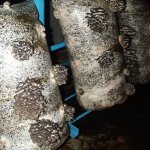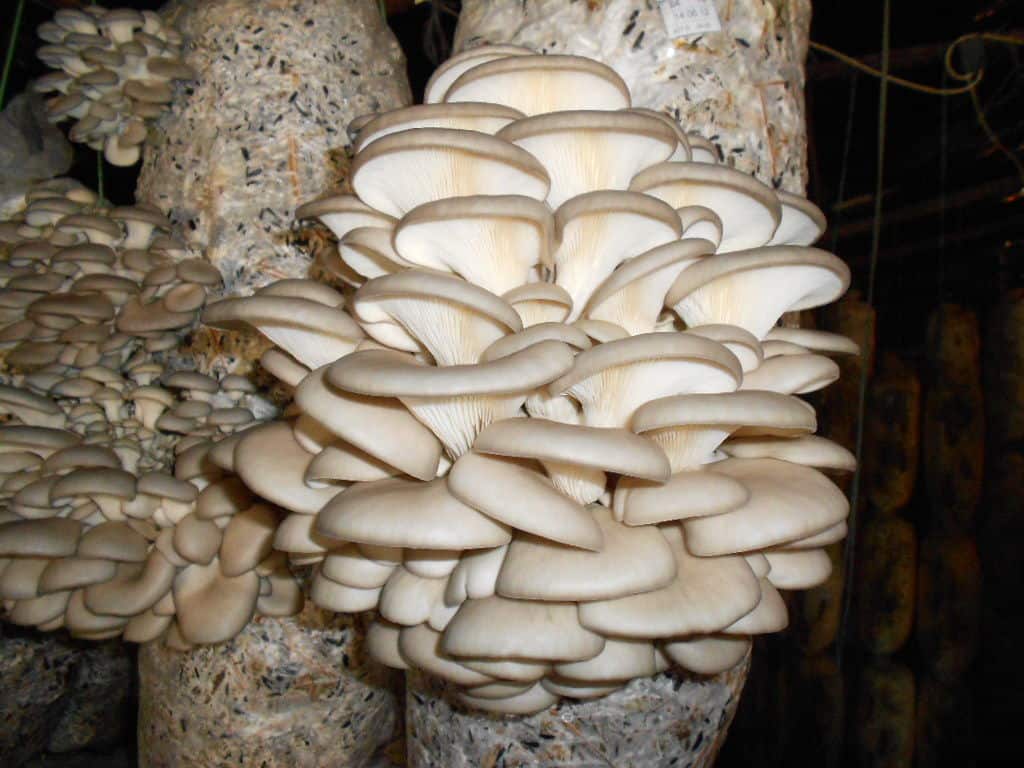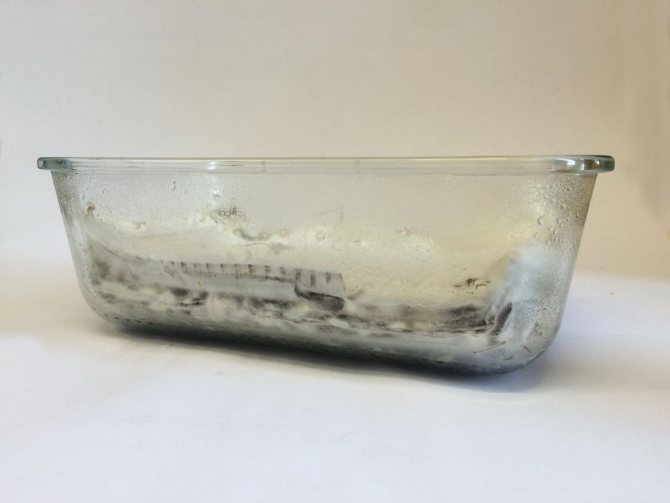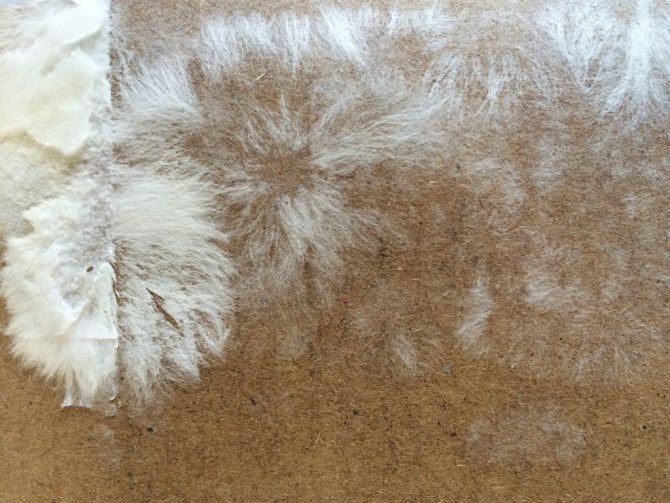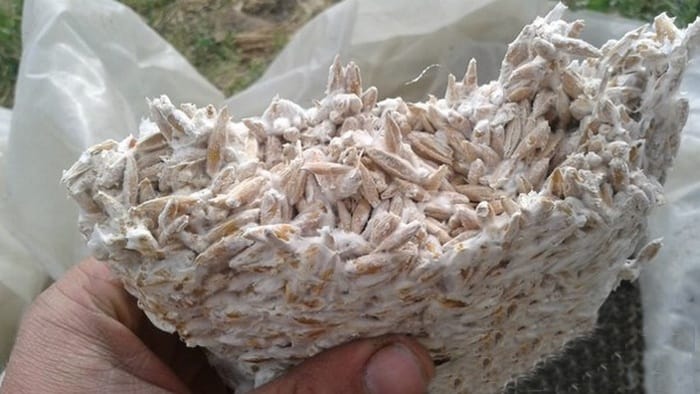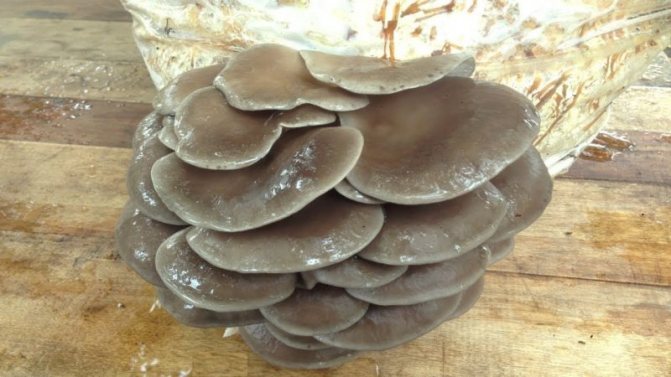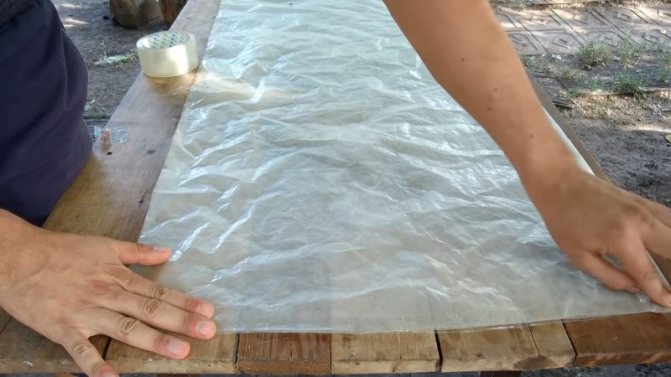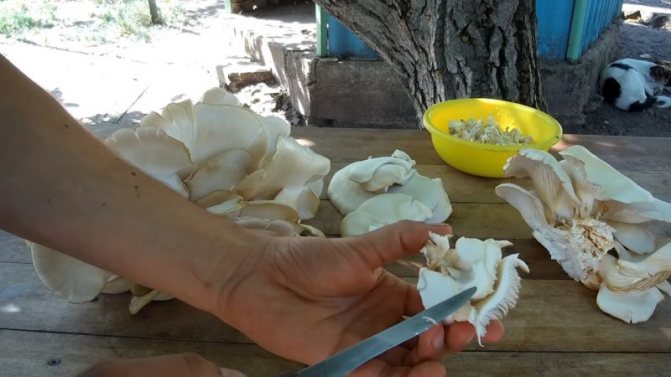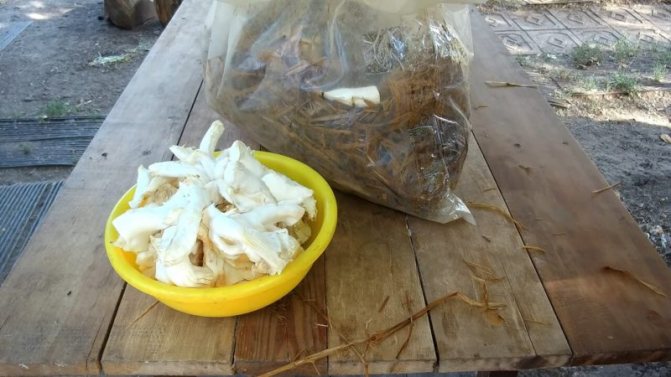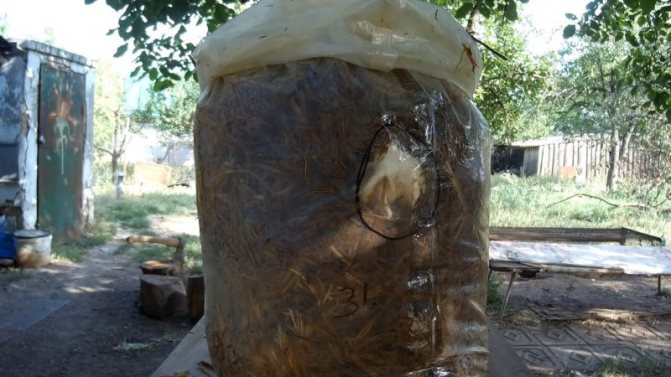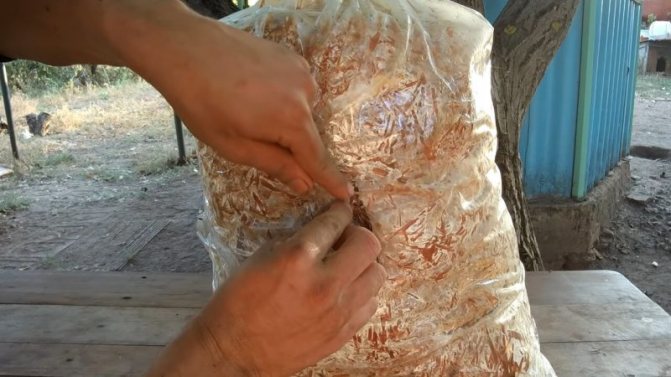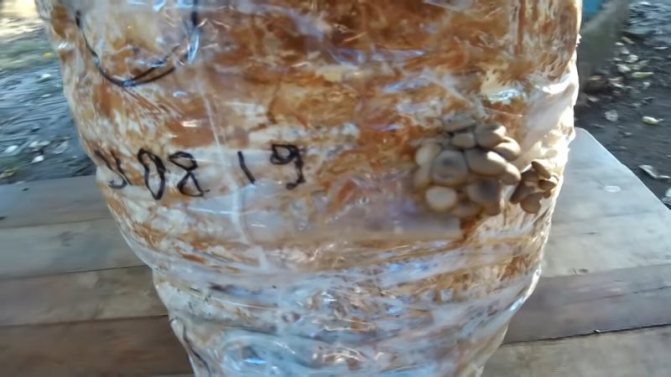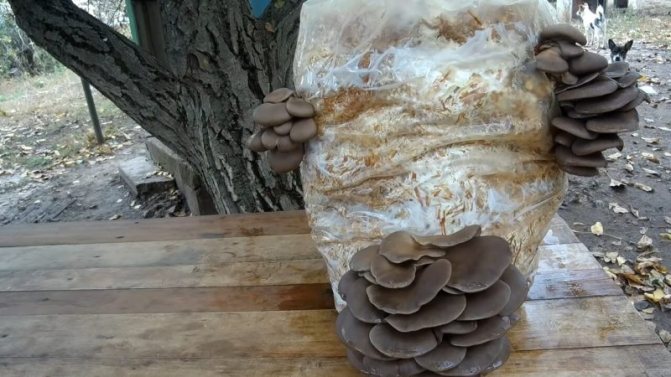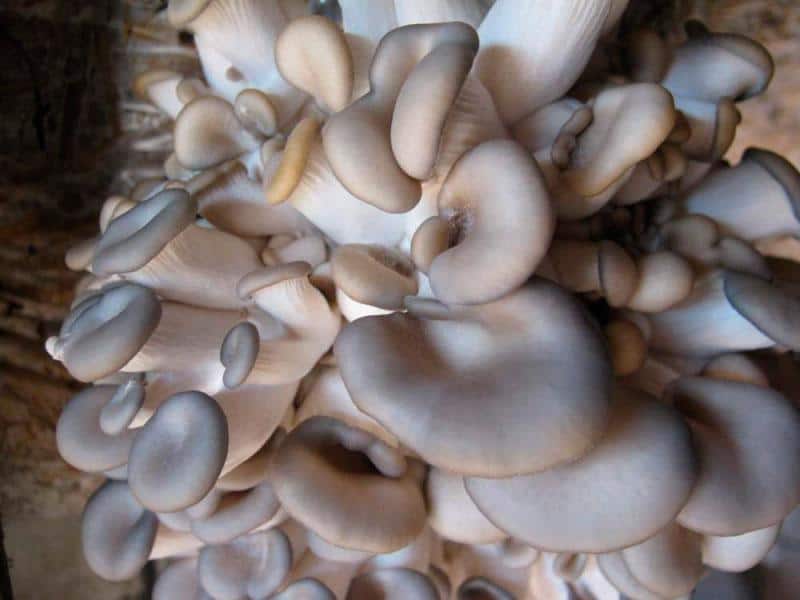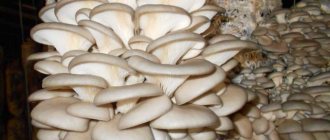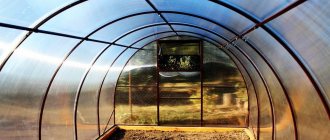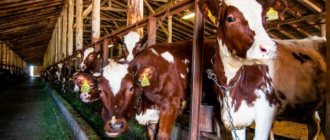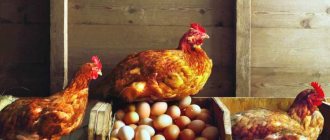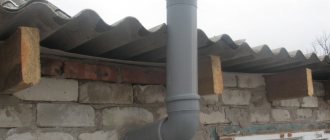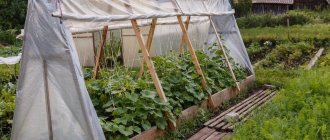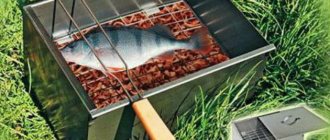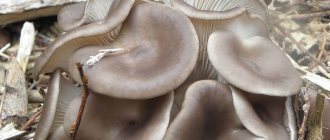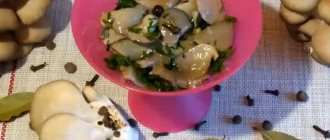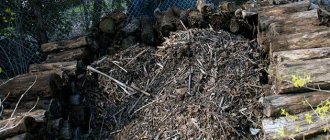You won't surprise anyone with a vegetable garden on the windowsill, but growing oyster mushrooms and champignons is a rather rare activity that will not only significantly save money, but also give confidence that mushrooms are free of carcinogens and nitrates. Many mushroom growers independently grow oyster mushroom mycelium, which allows them to guarantee 100% product quality.
How to grow oyster mushroom mycelium at home
The process of growing mycelium of oyster mushrooms at home is not difficult, but it requires compliance with special sanitary conditions, maintaining the maximum sterility of the room in which the work will be carried out.
The mycelium is the rudiments of the mycelium. In the nutrient substrate, subject to the necessary external conditions, it grows with edible mushrooms. The method of reproduction of mycelium from fungal spores appeared not so long ago, at the end of the 19th century. Before that, tissues of wild-growing myceliums were used in home breeding. They were partially cut off and transferred to a nutrient substrate, thus trying to multiply. At the same time, the harvest was low and quickly degenerated.
Now the method of growing spores of "cultivated" oyster mushrooms on nutrient soil is used. Rye is considered a universal raw material for it. Also used are grains of other cereals, sunflower husks, less often - wood, sawdust. And after 6-8 weeks, you can feast on fresh juicy mushrooms.
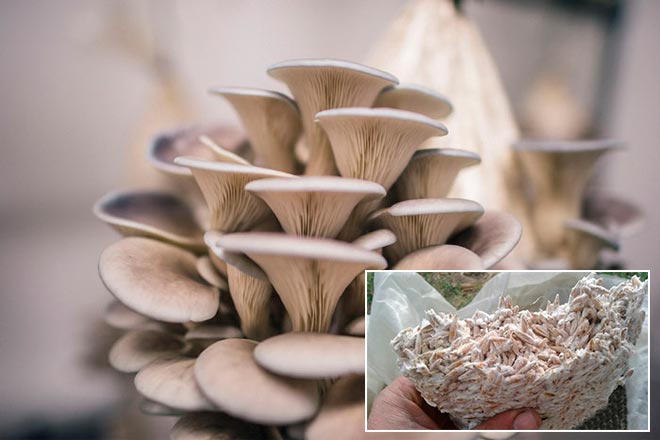
The entire manufacturing process includes three stages:
- preparation of uterine mycelium;
- growing intermediate mycelium;
- its storage and further cultivation.
In the room intended for growing mycelium, the following conditions are provided:
- constant temperature - about 24 ° C;
- darkness and lack of ventilation;
- humidity - should be maintained within 75-90%.
In addition, all tools for work are disinfected, and the table is well disinfected with alcohol.
You can get the mushroom mycelium ready to work in 2-2.5 weeks. At the same time, watch carefully so that no stroma (mycelial crust) grows on the surface of the substrate. This happens if too many spores are added to the soil or the room temperature is too high. Stromas reduce the amount of possible harvest.
Bacterial and fungal diseases of the mycelium should be monitored. A bacterial infection is indicated by the release of moisture and the appearance of an unpleasant odor from the substrate. If multi-colored (orange, black, gray, green) spots appear on its surface, this is a sign of fungal infection.
Obtaining uterine mycelium
First you need to prepare sterile dishes - test tubes with screw caps and jars of up to three liters. The covers must have a hole in the middle. Before starting work, they are sterilized in an autoclave or pressure cooker, installing holders for containers in it.
Properties and purpose of mycelium
The mycelium is the vegetative body of the fungus, capable of changing its shape, adapting to the specific growing conditions. The mycelium forms special organs that allow it to reliably gain a foothold in the nutrient medium - soil, root, wood, substrate.
To grow boletus, saffron milk caps or porcini mushrooms, you need a mycelium, a substrate and conditions suitable for vegetation.
Mycelium functions:
- Attachment to the nutrient medium.
- The processing of cellulose with enzymes - to obtain substances necessary for the growth and development of fruit bodies.
- Adaptation to environmental conditions.
- Participate in the education and persistence of disputes.
The mycelium is the most important organ responsible for the transport of nutrients and vegetative reproduction.
Planting material
Novice mushroom growers do not always know where to get oyster mushroom mycelium and often buy a ready-made product. At the same time, its quality is not always satisfactory, and the time and money spent cannot be returned. But professionals in their field argue that it is better to make mycelium on your own than to “bite your elbows” later. This process is not complicated, but rather lengthy. If you still decide to grow uterine mycelium with your own hands, then please be patient and faithful.
Seed germination: how best to germinate crop seed
There are many techniques in which a vegetative body is grown on cardboard or wood. But for this you need to create special conditions. and provide large areas. On the other hand, it is quite easy to grow a good mycelium on the substrate of cereal grains. This is a fairly inexpensive way.
Conventionally, the process of making mycelium can be divided into three stages:
- uterine;
- intermediate;
- sowing.
The production of uterine mycelium is carried out from the cap of the oyster mushroom, since this is where its spores are located. For this purpose, only fresh mushrooms should be used. The main thing at this stage is the sterility and purity of the culture. There should be no damage or disease on the mushroom itself, and all instruments are sterile. Otherwise, bacteria can develop in the substrate.
To make the uterine mycelium, you need to cut the mushroom in half and separate a small piece from it, closer to the cap, with sterile tweezers. Further, it is dipped in hydrogen peroxide to disinfect, get rid of parasites and larvae. This piece is placed in a test tube with a prepared substrate (crushed grain, potato, carrot or oat agar). The vessel is tightly closed and stored in a warm (20 degrees Celsius) place inaccessible to direct sunlight for 14 days. After two weeks, a fluffy white coating should appear. This is a quality uterine mycelium.
At the second stage, the nutrient soil is prepared. You can make it yourself using oats or rye. In no case should you mix several types of grain. They can ferment and spoil the material.
In order to obtain an intermediate mycelium, the grains are poured with water and boiled for 15-30 minutes. After that, they must be filtered and allowed to dry thoroughly. Then the grain is mixed with gypsum and chalk (lime) in the following proportion: for 1-1.5 kg of cereals, take 30 g of gypsum and 10 g of chalk. Mix everything and fill the jars 2/3. Now the stock material from the test tubes is added to these filled containers. The jar must be covered with foil and secured with tape. The dishes are still stored in a warm room. The result will be only after 2-3 weeks. This way you can multiply the mycelium of the oyster mushroom.
How to grow celery from seeds at home
But you should carefully examine the intermediate myceliums. If spots and black dots are noticed on the grains, unnecessary bacteria have appeared. No need to panic! All is not lost yet. Such jars are placed under a quartz lamp for a day.: Its light will help eliminate harmful microorganisms and prevent their spread.
And finally, the third stage. To obtain inoculum, an intermediate mycelium is placed in a clean dish with a substrate. After the mycelium has grown, it is transferred into bags or briquettes with a substrate prepared for growing mushrooms.
Cultivation technology at their summer cottage
To grow mushrooms in a summer cottage, you need to choose a place in which conditions will be created that meet the requirements of the biology of the fungus.For the growing season of mycelium and fruit formation, the following criteria must be met:
- the temperature range at which the mycelium is able to form its structure and fruiting body - +12 - +20 degrees;
- air humidity - not less than 70%;
- forced removal of carbon dioxide (ventilation system), the excess of which mushrooms cannot tolerate;
- high-quality nutrient substrate containing cellulose, a high level of organic elements and calcium, saturated with nitrogen, phosphorus and potassium, the reaction of the substrate is slightly alkaline.
Preparation and processing of the substrate
For each type of mushroom (oyster mushroom, champignon, white), there are recipes for preparing a nutrient substrate in which the culture will be cultivated. Common to all cultivated mushrooms is the following:
- the substrate is prepared by composting a mixture of initial components, during the preparation process, the raw material undergoes biological fermentation, as a result of which cellulose and mineral elements are converted into a substance available for absorption by mushroom hyphae, the resulting product is called compost;
- due to the fact that in nature the filaments of mycelium interact with the roots of trees, the composition of the compost necessarily includes plant materials containing cellulose - straw, sunflower husk, flax fire, sawdust of deciduous trees;
- nutrients (nitrogen, phosphorus, potassium, calcium) should be presented in organic form, horse manure is considered the best fertilizer for mushroom compost, but it can be replaced with cow or poultry droppings (the yield will be lower);
- additives of chlorine-containing fertilizers are excluded, as well as watering compost and mycelium with tap water;
- the finished compost must have a slightly alkaline reaction.
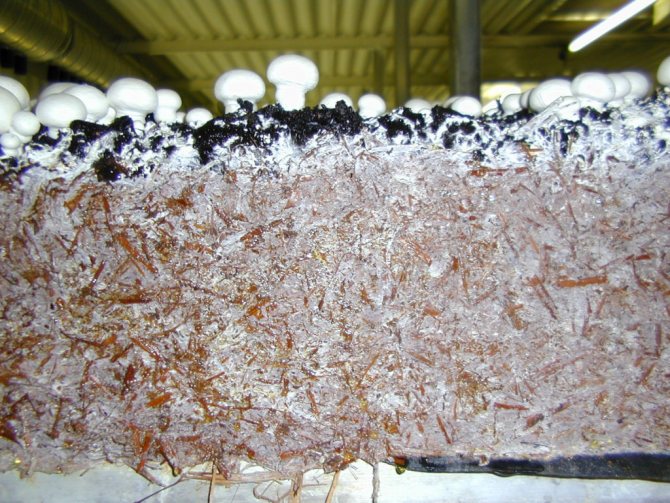

It takes 28 days to prepare the compost. The technology for making mushroom compost includes the following stages:
- Soak. In a separate container, pour straw, hay, fire with water and leave for 3-5 days before overheating.
- Composting. Put soaked straw and manure in layers in a pile or a special composter box. Pour warm water over each layer. In total, up to 8 layers are allowed.
- After 3-4 days, add mineral fertilizers to the resulting stack, mix everything.
- The compost should be shovelled every 4 days.
- When the substrate is completely ready, add alabaster, gypsum or chalk to it.
How to plant mycelium correctly?
Oyster mushrooms and champignons are grown in different ways: oyster mushrooms can be bred on stumps at their summer cottage, and mushrooms - on ridges, in boxes or bags. For champignons, the rules for laying a mycelium are as follows:
- load compost heated to 27 degrees into containers, with a layer of 30 cm;
- dig holes on the surface at a distance of 20-25 cm from each other;
- pour a thin layer of grain mycelium into the holes, compost - in handfuls of a tennis ball;
- sprinkle the mycelium with soil 1-2 cm high;
- cover the box with plastic wrap;
- after 2 weeks, a white coating in the form of threads will appear under the film;
- remove the film and cover the surface 4-5 cm with moss, soil or straw.
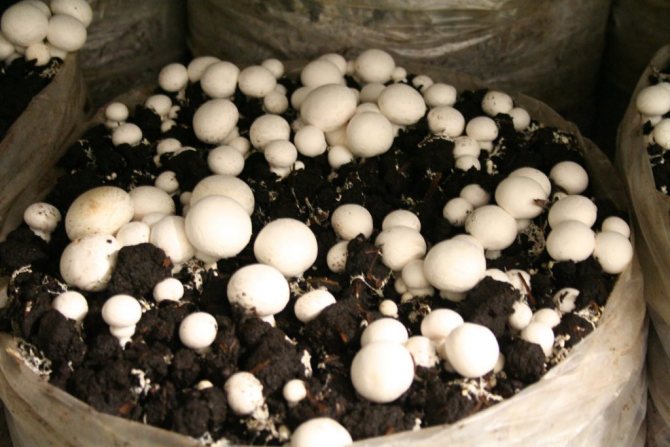

In order to grow oyster mushrooms, you need to pick up a few slightly spoiled stumps with tree roots in damp shade. A place near a well or garden pond is suitable. Mycelium is poured into the cuts on the stumps and around the stumps, and all this is covered with a mixture of earth and humus.
Creation of sterile conditions
A more modern fermentation method is the use of silos. With their help, compost can be prepared at any time of the year, and most of the nutrients are retained. In the bunker, they do not make a break, which significantly increases the quality of the finished product.
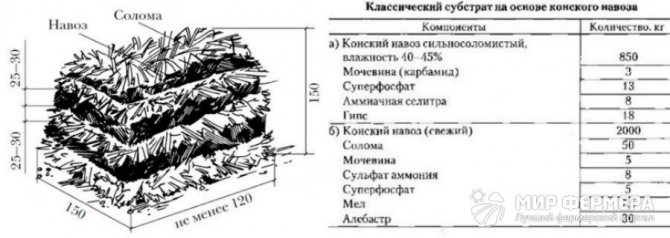

Figure 7. Main components of mushroom compost
The hoppers also use hot steam, but provide a constant stream of clean air. As a rule, air is supplied through pipes with underfloor nozzles.However, such a system is used mainly in large industrial enterprises and it is difficult to equip it at home.
Mycelium storage
The finished seed does not need special storage conditions. This product is not perishable, so it can be left on the lower shelf of the refrigerator at a temperature of + 1- + 5 ° C. In such conditions, it can be stored for a year. But if the air temperature is + 30 ° C and higher, the material will deteriorate. And also the mycelium can be frozen in freezers at a temperature of -20 ° C.
In addition, it is stored in pre-processed vacuum bags. For 15 minutes they are placed in boiling water, dried, and only then the seed is placed. But this method requires extra care! If the bag is torn or accidentally opened, it is necessary to urgently plant the mycelium, otherwise it will deteriorate. Re-packing is pointless.
Video "Self-production of mycelium"
From this video you will learn how to make a substrate for mushrooms with your own hands.
Growing mushrooms on a garden plot is not as difficult as it seems at first glance. The first step is to decide which ones you want - milk mushrooms, honey mushrooms, boletus mushrooms or mushrooms. If there is a piece of wood on your site, that would be ideal. However, one must understand which forest is deciduous or coniferous. It depends on which mycelium can take root there and form the fruiting body of the fungus. But even if there is no forest nearby, it doesn't matter, there is a garden on each site.
Many people imagine: in order to grow a mushroom, you must first find it in the forest, dig it up, chop it, sow it in the garden. It's all much easier now. In any garden store - whole showcases of packs of mushrooms with mycelium.
It is enough just to buy a pack, on the back of which there is a step-by-step instruction on how to properly dilute and care for this particular type of mushroom.
“Be prepared for the fact that, having fulfilled all the instructions, you will not get a harvest in the first year,” warns Tatiana Kudryashova. - It will happen either next year or two years later. Such a capricious mycelium! It is better to sow mushrooms in early spring, as soon as the snow has melted and the ground has warmed up. Until it gets hot, it's bad for survival. In spring, there is a lot of moisture, it rains in sufficient quantities, and the sun is not so hot. It is also important that you need to water the mycelium more than once a week, as many are accustomed to, but as often as possible.
So the place for the mycelium should be determined now. And get ready.

